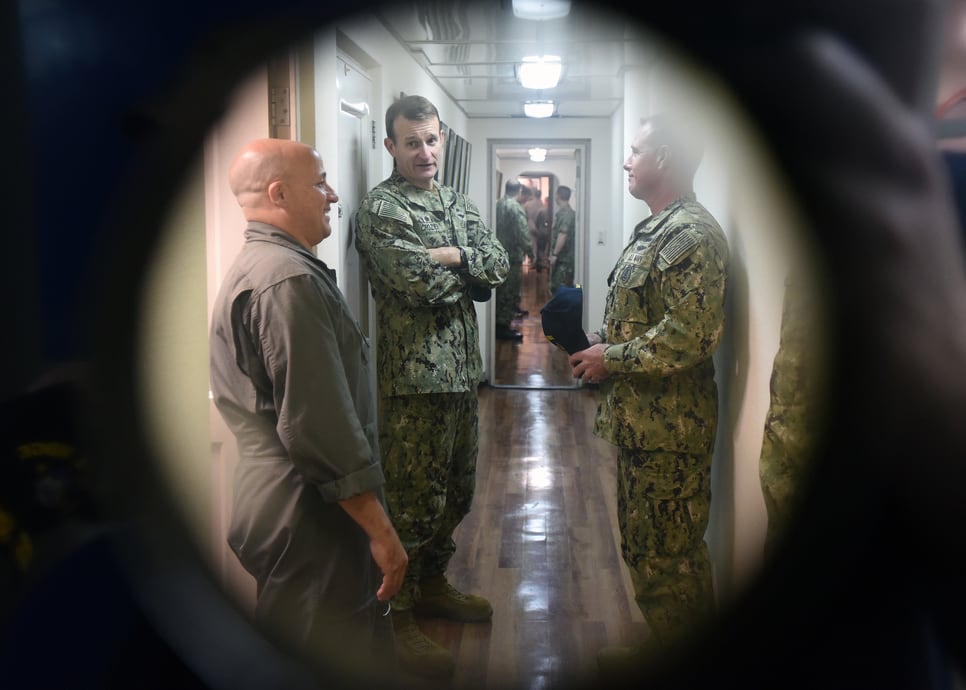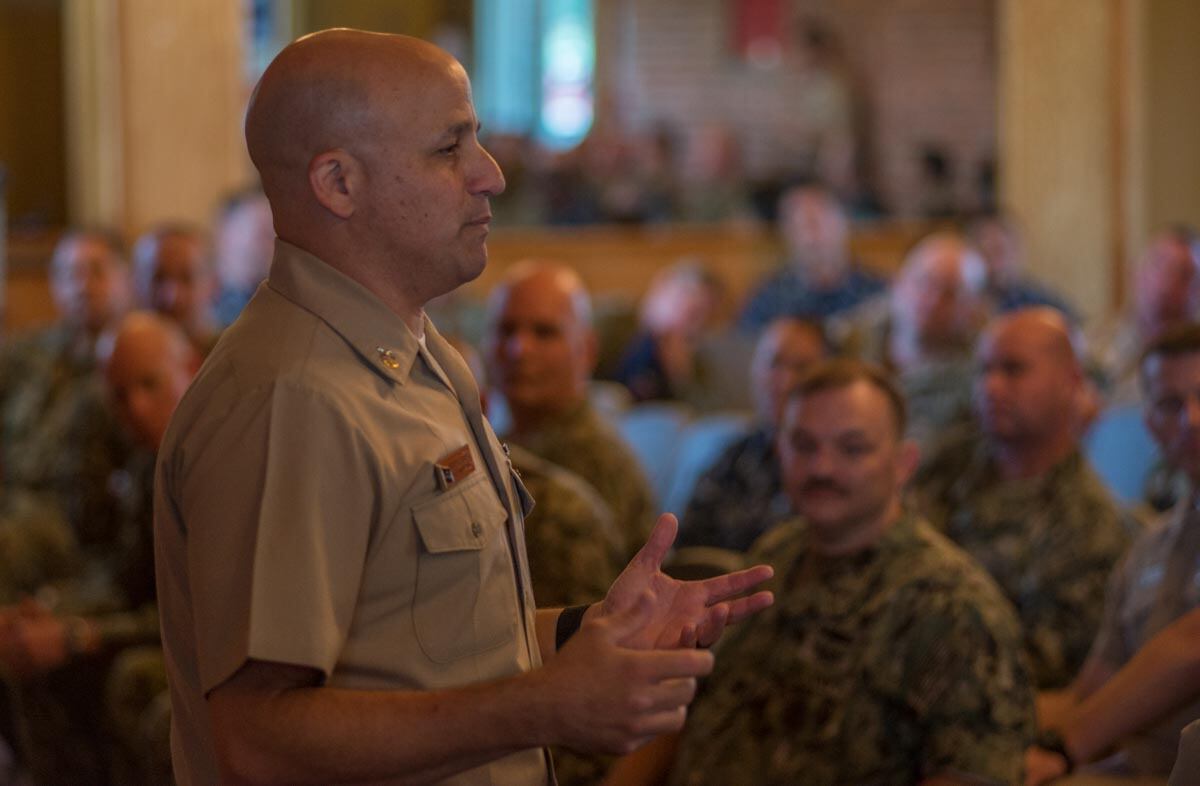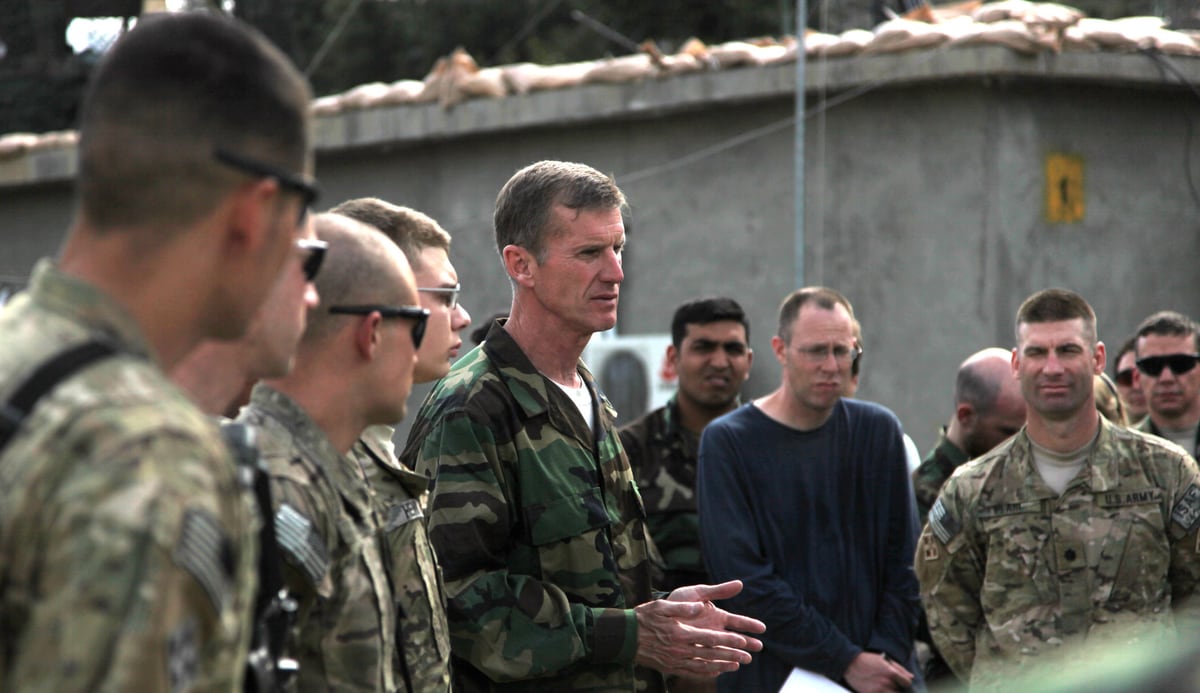Before the Navy fights, survives and beats an enemy in a high-end sea battle, the war will be won or lost by how well chief petty officers trained and led their junior sailors.
That’s the message Master Chief Petty Officer of the Navy (SW/AW/IW) Russ Smith is hammering home to the enlisted force, every chance he gets, long before any shot is fired.
Smith detailed the message in a Oct. 25 letter to the Navy’s sailors, calling on the chiefs mess to build deckplate-level teams across commands so that warships will dominate sea combat.
“Every Navy leader aspires to leave behind a better and more prepared Navy than the one they found when they arrived, and I am no different,” Smith wrote in the letter which was published on the Navy Live blog. “Together we must set a blistering pace above, on and below the sea, projecting strength so profoundly that we give pause to anyone who would dare challenge us.”
While Smith’s primary concern as the Navy’s top enlisted sailor is to advocate for junior personnel, he believes his responsibilities don’t end there. He also sets the tone for chiefs throughout the service, which is why he wrote that he wants "to leverage our 3,000 master chiefs in leading 31,000 chief petty officers to build winning teams in preparation for the future fight.”

He expanded on that crucial point during a Tuesday interview with Navy Times, saying that there’s “a lot of overlap of what the chief’s mess does with both the junior enlisted as well as the wardroom."
“We have our own unique niche where we are stronger and where we are best in what we bring to the fight — and those core strengths of the chiefs mess that stand out beyond all others are technical competence, innovative thinking, communication and networking.”
To Smith, those four skills combine into a “force multiplier” for the Navy. They allow for nimble chiefs to work inside and alongside other leadership teams and even the Navy as a whole to solve problems.
In his letter to the force, he said that adding those skills and experience can spark innovation and “get results,” which is why the mess “will be absolutely essential to finding new and better ways to build muscle memory that develops toughness, which will lead to true combat readiness."
The Navy is toiling to end administrative distractions dogging the fleet and making it easier for sailors to wield online tools to manage their careers and help their families. And officials are beefing up boot camp so that sailors focus on essential military training, priming them to immediately contribute when they arrive in the fleet, he added.
More advanced waterfront training will follow so that personnel won’t be pulled away as often from their commands or their families to sharpen their skills.
“Those efforts will return time and opportunity to the deckplates, allowing leaders to focus on tactical skills and warfighting readiness,” Smith wrote.
RELATED

In his Navy Times interview, Smith said he’s learned to see the service as a thriving whole, with individual commands fostering their own “team of teams.”
Championed by retired Army Gen. Stanley McChrystal and based on concepts honed in special operations units, it’s a leadership notion that’s becoming increasingly popular with senior military minds.
To Smith, it’s also essentially how a Navy warship operates. He sees a fighting vessel as a “ship of teams” that work together not only to fight the ship but also any potential enemies. And sailors aboard a ship also are assigned to multiple “teams across the command.”
“You are on a team in your division and within your rating, but depending on your assignment on board ship, you could also be assigned to a firefighting or damage control locker along with a regular watch team in your duty section,” Smith said. “We are, essentially, a team of teams. We each contribute to and serve on different teams which leverage different skill sets we have."

Smith pointed to an IT2 who works in the communications division of a destroyer. He or she also might be a rescue swimmer on hand for man overboard evolutions, a member of a general quarters repair 5 locker and a trusted petty officer on a watch section team.
The chiefs mess is responsible for not only keeping each of those teams functioning at a high level, but also orchestrating their interactions with other teams and ironing out conflicts that might arise because of that sailor’s many responsibilities to multiple teams.
“We all have different teams that we’re a part , lots of responsibilities to different teams, all situationally dependent on what is going on board the ship or unit at the time, but all integral to the functioning of the ship as a whole,” Smith said.
And at no time is the chief’s role more crucial than during high-end combat at sea. In his letter, Smith said that the Navy the nation needs “will demand more from us," which is why Smith says they "must become stronger, run faster and effectively build teams to compete and win in high-end warfare at sea.”
Mark D. Faram is a former reporter for Navy Times. He was a senior writer covering personnel, cultural and historical issues. A nine-year active duty Navy veteran, Faram served from 1978 to 1987 as a Navy Diver and photographer.





